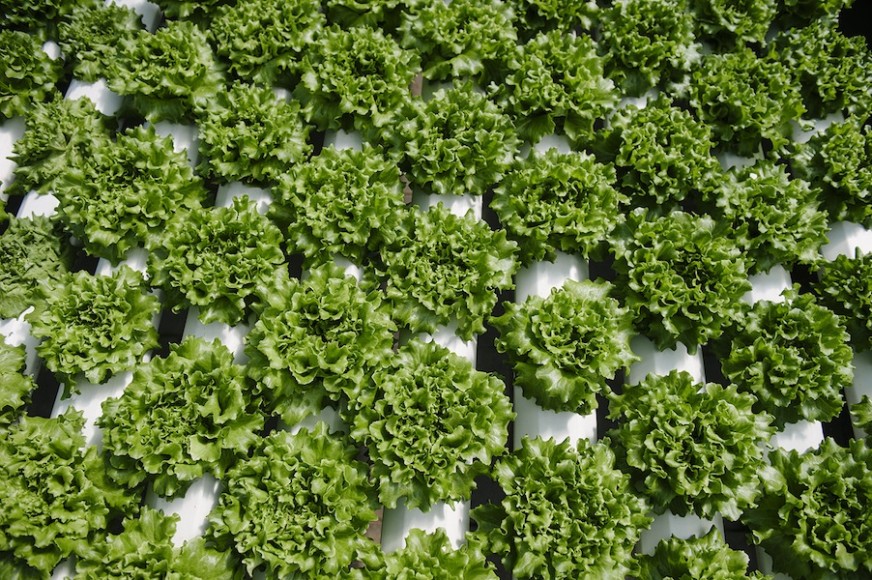Should you ever set foot in the Gotham Greens farm atop the Gowanus Whole Foods — the 20,000-square-foot hydroponic operation opened outside the rooftop beer bar last year — be sure to breathe deeply.
Filled with thousands of floppy stalks of basil and rows of Blooming Brooklyn Iceberg growing in water-nutrient solutions rather than soil, the place is an aromatherapy chamber for post-modern locavores, a temperate spot with the deep scent of growing greens and the faint trickle of the H2O that keeps the place humming.
Even here in New York City, the four-year-old business is notable for its environmentally minded, high-tech style of urban farming, which produces food 365 days a year. Their water is recycled; they use 20 percent renewable energy, including solar; there are retractable sun shades, LED lighting and strategic deliveries of bees and other insects to help manage pests and pollinate.
Yet what’s even more impressive is its profitability.
“One hundred percent of our product is sold commercially,” says Gotham Greens cofounder and CEO Viraj Puri, “which makes it different.”
While plenty of other city operations have fish tanks with floating seedlings or hanging pods made from recycled water bottles to show how hydroponic urban ag could be done, Gotham Greens is actually doing it. Today some 300 tons of Gotham Greens herbs and lettuces a year are harvested within just a few weeks of planting — literally snip, snip, snip with some extra-sharp shears — and packed into plastic boxes by gloved workers and sent not just down a flight of stairs to Whole Foods’ produce aisles, but to customers like Gramercy Tavern, Franny’s, Fresh Direct, Good Eggs, D’Agostino, Key Foods, Foodtown and even a ShopRite in East New York.
Puri, a former project manager for an environmental engineering firm, got the idea in 2007 while helping develop the Science Barge, a floating, hydroponic, educational greenhouse anchored in the Hudson River. Noticing an increasing interest in local food and hard-core farm-to-table, “a light bulb went on,” he says. Hydroponic farms in the city, he realized, could be a supply for some of that demand.
In 2008 he convinced his friend Eric Haley, then working at a small investment firm, to be his cofounder, and together they developed a business plan (which won a Brooklyn Chamber of Commerce competition), tapped a chief agriculture officer to perfect their crops for fastidious city chefs (Jennifer Nelkin Frymark, an expert in hydroponic systems) and started raising money. After a false start with a rooftop in Queens, they finally built their first solar-powered, 15,000-square-foot rooftop in Greenpoint in 2011.
It was an immediate success: Their first customers were Gramercy Tavern and Whole Foods, who liked the products so much they asked the company to build a second location on the roof of their new store in Brooklyn. (Gotham Greens leases the space from the grocer and grows them two special crops: arugula and the hydroponic heirloom tomatoes you can spot if you look up when you enter the market’s front doors.)
Demand is now so high, says Puri, “we’ve just had to turn people away,” which is why he’ll soon open both a Chicago outpost and a 75,000-square-foot rooftop space in Queens, ramping up New York City production to 1,000 tons of produce this year.
Despite the growth, Puri insists he doesn’t intend for hydroponics to replace traditional farming but rather be “a really good complement, a piece of the over-all foodshed… We can play a role,” he adds, and grow “a meaningful amount of food, create jobs and get a couple of hundred trucks off the road.”
Not to mention making a couple of seriously sweet-smelling rooftops.
Photo credit: Patrick Kolts



